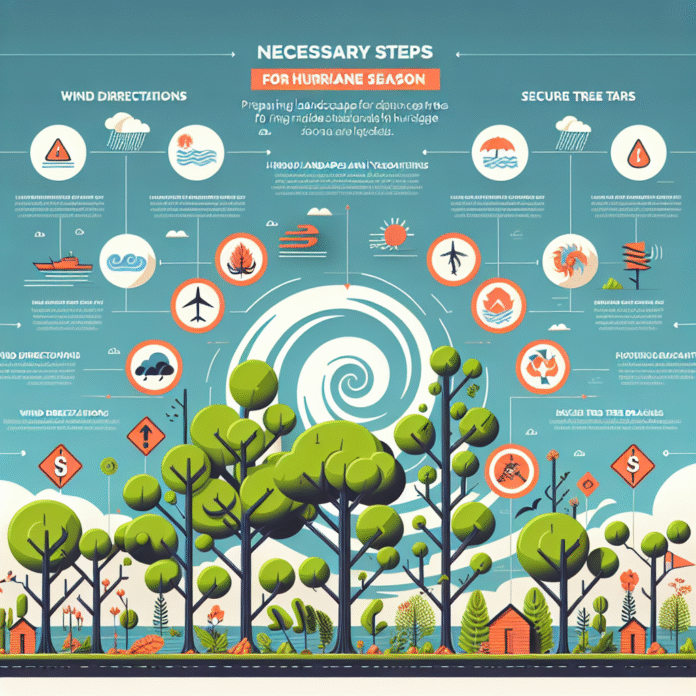Get Ready for Hurricane Season with Tree and Landscape Prep
Prepare Your Landscape and Trees for Hurricane Season
As hurricane season approaches, it’s crucial for homeowners in hurricane-prone areas to prepare their landscapes and trees. Proper preparation can minimize damage to property and enhance safety during severe weather events. Here are some key strategies to consider:
Assess Your Trees and Plants
Start by evaluating the health and stability of your trees and plants. Look for any signs of disease, decay, or structural weaknesses. Trees with dead branches, cracks in the trunk, or shallow root systems are more susceptible to being uprooted or snapped during high winds. Consider hiring a certified arborist to inspect large or potentially hazardous trees.
Prune Strategically
Regular pruning can strengthen trees and help them withstand strong winds. Trim back any dead or overhanging branches, especially those that might pose a risk to your home or nearby structures. Avoid heavy pruning right before a storm, as it can stress the tree. Instead, make it a routine task throughout the year.
Secure Loose Items
Before a hurricane strikes, secure or remove any outdoor items that can become projectiles in strong winds. This includes patio furniture, garden tools, and decorations. Store these items indoors or in a secure shed to prevent them from causing damage.
Create a Drainage Plan
Heavy rains often accompany hurricanes, leading to flooding. To mitigate this risk, ensure that your landscape has proper drainage. Clear gutters and downspouts, and consider regrading your yard to direct water away from your home. Installing rain gardens or permeable paving can also help absorb excess water.
Use Native Plants
Incorporating native plants into your landscape can enhance resilience against severe weather. Native species are adapted to local conditions and typically require less maintenance and water. Additionally, their deep root systems can help stabilize soil and reduce erosion during heavy rains.
Consider Windbreaks
Planting windbreaks, such as rows of shrubs or trees, can help shield your home from strong winds. Choose species that can withstand harsh conditions and are known for their stability. However, be cautious about planting these too close to your home, as they can also pose a risk during storms.
Stay Informed and Prepared
Always stay updated on weather forecasts and hurricane warnings. Have an emergency plan in place that includes provisions for your landscape and trees. This plan should include evacuation routes, communication methods, and supplies needed for your family and pets.
Post-Storm Assessment
After the storm has passed, carefully assess your landscape for damage. Check your trees for any broken branches or signs of stress. If you notice any significant damage, consult a professional to determine the best course of action, whether that involves pruning, bracing, or removing the tree.
By taking these proactive steps, you can help ensure your landscape and trees are better prepared for the challenges of hurricane season. Proper preparation not only protects your property but also contributes to the overall resilience of your community in the face of natural disasters.

